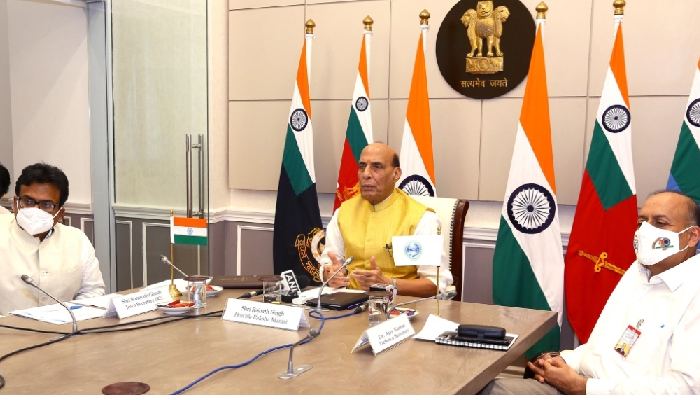The force has recently come up with an aviation brigade in the region after getting more unmanned aircraft ‘Heron I’, chopper ‘ALH Dhruv’ and weaponised attack helicopters ‘Rudra’, reports Sumit Kumar Singh
The Indian Army has enhanced deployment of air assets, including unmanned aircraft, near the borders with China in Arunachal Pradesh region.
The deployments have increased gradually as the Indian Army revamped air fire power at its aviation wings. The force has recently come up with an aviation brigade in the region after getting more unmanned aircraft ‘Heron I’, chopper ‘ALH Dhruv’ and weaponised attack helicopters ‘Rudra’. Earlier, the force aviation wing largely had Cheetah Helicopters
The force have raised the Squadron of indigenously designed and developed Advanced Light Helicopter (ALH-Dhruv). It is a twin engine, multi-role, multi-mission new generation helicopter in the 5.5 ton weight class and is being used for quick mobilisation of troops.
The Army has also raised its first ever dedicated squadron of ‘Rudra’ armed helicopters. Rudra is the first Army Aviation aircraft to add ‘teeth’ to the fleet of Army Aviation with its Mistral air-to-air missiles, 70 mm rockets, 20 mm guns and ATGMs. The ALH(WSI) is a force multiplier for the field force commander with its potent weapons on board. This helicopter will be able to storm the enemy forces and hunt them down when required.
“ALH(WSI) pilot will be like an archer who will strike and kill or injure the enemy from a distance. He will be like a fierce God bringing death and destruction to the enemy,” said a senior Indian Army officer.
The Army Aviation wing recently got Israeli made Unmanned Aerial Vehicles (UAV) Heron I from Artillery in August.
Corps of Army Aviation’s Lieutenant Colonel Amit Dadhwal said that the aviation wing has evolved from simple fixed wing aircraft with basic avionics to state-of-the-art equipment.
“We have in the rotary platforms today in the form of Cheetah, Advanced Light Helicopters, ALH-Weaponised System Integrated and Light Combat Helicopters,” Lt Col Dadhwal said.
“These Rotary Wing platforms provide us and our leaders and commanders a plethora of capabilities so that we can achieve success in all kinds of operations.”
As the Chinese People’s Liberation Army aggression at the Line of Actual Control, the force has increased frequency of surveillance at the border area to keep a tap on their activities.
“The aircraft since its inception has been the backbone of surveillance. It can climb up to 30,000 ft and continue to give feed to commanders on the ground. So that we can manoeuvre forces on the ground. It has an endurance of 24-30 hours at a stretch,” said Major Karthik Garg.

From Sikkim to Arunachal Pradesh, India shares a total of 1,346-km-long LAC with China.
India and China have been engaged in border standoff for the past 18 months.
So far, 13 rounds of top commanders level meetings have taken place and in the last round of talks, which was held on October 10, culminated inconclusive.
ALSO READ-Maoist attack kills seven commandos
READ MORE-US Navy Chief in India to strengthen military cooperation






